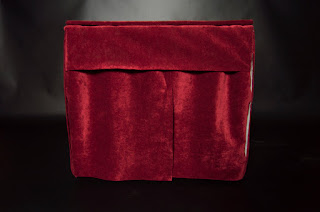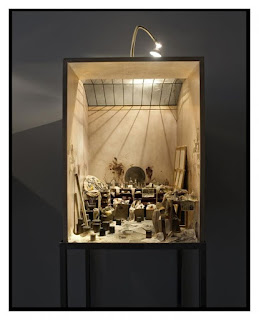Container
#1 Barbie
Elements and Principles: Repetition, Balance, Color
Emotions/Thoughts/Ideas: Happiness, I like the use of repetition
#2 Francis Bacon's Studio by Charles Matton
Elements and Principles of Design: Emphasis, Asymmetry
Emotions/Thoughts/Ideas: I like how the light source emphasizes the objects, feels like grandmas house, easy to see
#3 Time Box
Elements and Principles of Design: Asymmetry, Balance
Emotions/Thoughts/ Ideas: feels like an artifact, I like how you can see inside the box
Collection
#1 Daily Dose Pick by Annette Messager
Elements and Principles of Design: line, shape, repetition
Emotions/Thoughts/Ideas: I love the shape, I like how she made a new shape out of smaller found objects
Artist Statement: Suspended photos from threads of string
#2 Reflection by Katsumi Hayakawa
Elements and Principles of Design: Repetition, line, shape
Emotions/Thoughts/Ideas: looks like a birds eye view of a city, I like how he used different size objects to create a city landscape
Words from artist statement: made to resemble an overbuilt city out of paper, kept color to a minimum
#3 Andes by Alejandro Chavez
Elements and Principles of Design: Repetition, color, pattern
Emotions/Thoughts/Ideas: I like the handmade masks and all the colors
Free Standing
#1 Father Sighed, Mother Cried, into this Terrible World I Flied by Lara Schnilger
Elements and Principles of Design: line, negative space
Emotions/Thoughts/Ideas: a fort you made as a child, I like how the fabric is stretched over the wood
Words from artist statement: Likes to work in knitted and sewn textile sculptures
#2 Gunter Haese
Elements and Principles of Design: pattern, repetition, shape
Emotions/Thoughts/Ideas: Looks like a galaxy/meteor shower, I like how all the objects are not the same
Words from artist statement: He was self taught in drawing and painting, studied sculpture under matare
#3 Qube by Bruce Gray
Elements and Principles of Design: asymmetry, shape, texture, balance
Emotions/Thoughts/Ideas: abstract version of legos or building blocks, I like how the shapes are connected
Words from artist statement: He creates found object sculptures, and his sculptures were featured on television and movies


























